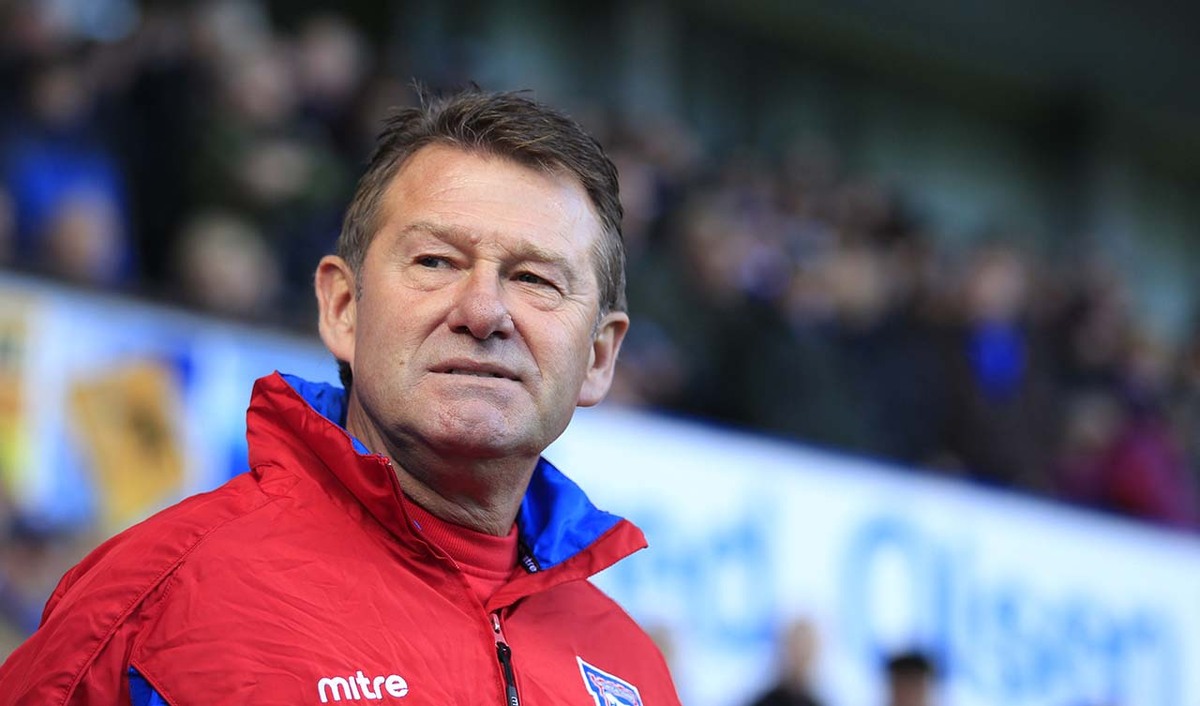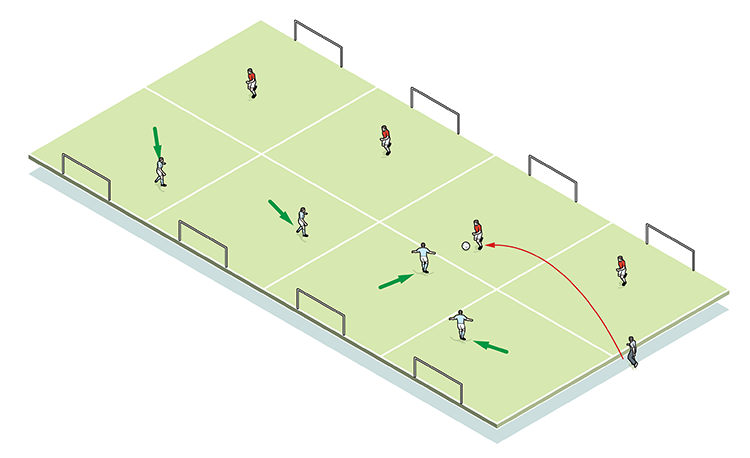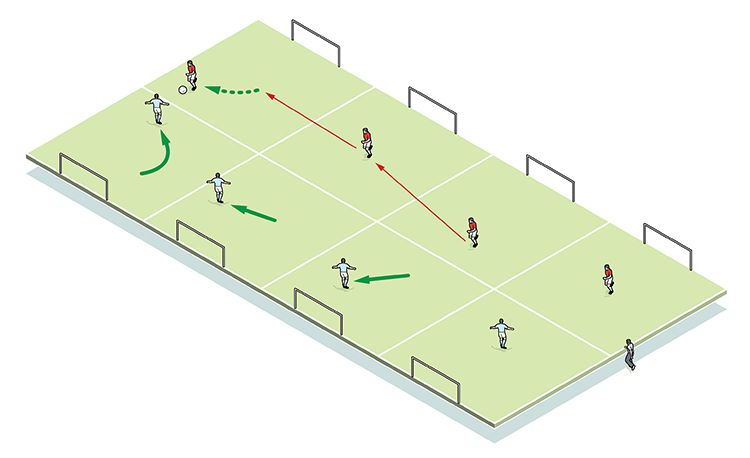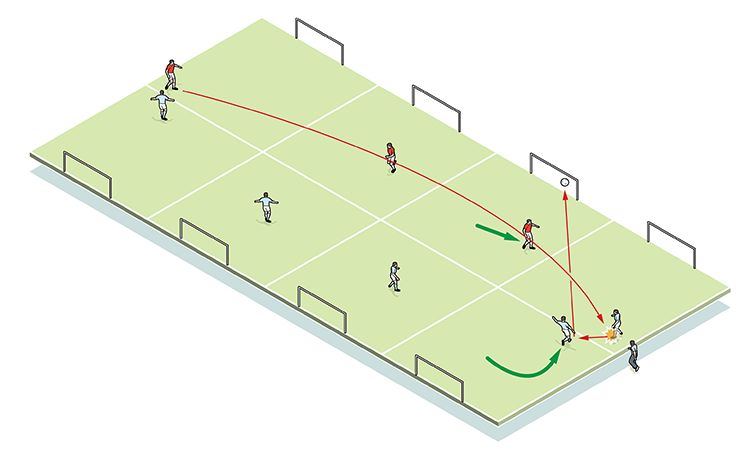Defending against wingers
This session is about denying attacking teams opportunities to get in behind the defence by pressing early. It is important to practise this because effective defending in 1v1 situations is vital, particularly for full backs facing skilful wingers.

| Area | 20x10-yard channels |
| Equipment | Balls, cones, 5-a-side goals |
| No. of Players | Team |
| Session Time |
1v1 20mins, 2v2 20mins, 4v4 20mins |
This session is about denying attacking teams opportunities to get in behind the defence by pressing early. It is important to practise this because effective defending in 1v1 situations is vital, particularly for full backs facing skilful wingers.
When manager Paul Jewell and I first arrived at Ipswich, our aim was to shore up a leaky defence. By using this session we subsequently earned five clean sheets in quick succession; included in that total were away shut-outs at promotion-chasing sides Leeds United and Cardiff City.
In 1v1, the playing area we set up in this session is designed specifically to replicate how a full-back would confront an approaching winger. As we add more players, so too do we expand our reach to showcase defending principles against centre-forwards as well. We frequently find our players subconsciously working this positional thinking into their match day movements.
What do I get the players to do?
We create a 20x10-yard channel with a target goal at each end. Either side of the right-hand goal, and lined up at the corners of the pitch, are the red team. The blue team take up identical positions at the other end of the area.
The first blue on the near touchline plays a pass to his opposite man - a red - and follows. Blue must close down quickly, get down the line of the ball and protect the goal behind him, into which red tries to score. If blue wins back possession he can attempt to score in the red goal.
1

Should the ball go out of play or a goal be scored, the players rejoin their queue and, anticlockwise, the sequence continues, with red playing to blue, and so on.
How do I progress the session?
Next we move to a 2v2 scenario, placing two pitches side-by-side to produce a 20x20 playing area. Players this time start in between the goals, and work in pairs.
2

Blue plays a diagonal pass to red to start. The blue pair breaks out looking to close down space as reds move forward, but all players must remain in their designated channels. Players can pass between channels with the aim of scoring in either goal.
3

What are the key things to look for technically/tactically?
In the first set-up, we’re looking for the blue player to close down quickly, monitor his position and stay on his feet. Progressing to the 2v2 scenarios, blues now need to cover and communicate, being quick to decide whether to show opponents inside or down the line.
Repositioning when the opposition switches play is important, as is an awareness to recover back towards goal when the need arises.
How would you put this into a game situation?
This can be progressed into to a 4v4 game by adding another two pitches, though all now have marked halfway lines which players cannot cross. Players begin in front of their respective goals. This time, we serve the ball to either team. Players are two-touch, but they can score in any of the four goals.
4

5

6

Editor's Picks
Attacking transitions
Deep runs in the final third
Using the goalkeeper in build-up play
Intensive boxes drill with goals
Penetrating the final third
Creating and finishing
My philosophy
Pressing initiation
Compact team movement
Coaches' Testimonials

Alan Pardew

Arsène Wenger

Brendan Rodgers

Carlos Carvalhal

José Mourinho

Jürgen Klopp

Pep Guardiola

Roy Hodgson

Sir Alex Ferguson

Steven Gerrard
Coaches' Testimonials

Gerald Kearney, Downtown Las Vegas Soccer Club

Paul Butler, Florida, USA

Rick Shields, Springboro, USA

Tony Green, Pierrefonds Titans, Quebec, Canada
Join the world's leading coaches and managers and discover for yourself one of the best kept secrets in coaching. No other training tool on the planet is written or read by the calibre of names you’ll find in Elite Soccer.
In a recent survey 92% of subscribers said Elite Soccer makes them more confident, 89% said it makes them a more effective coach and 91% said it makes them more inspired.
Get Monthly Inspiration
All the latest techniques and approaches
Since 2010 Elite Soccer has given subscribers exclusive insight into the training ground practices of the world’s best coaches. Published in partnership with the League Managers Association we have unparalleled access to the leading lights in the English leagues, as well as a host of international managers.
Elite Soccer exclusively features sessions written by the coaches themselves. There are no observed sessions and no sessions “in the style of”, just first-hand advice delivered direct to you from the coach.









